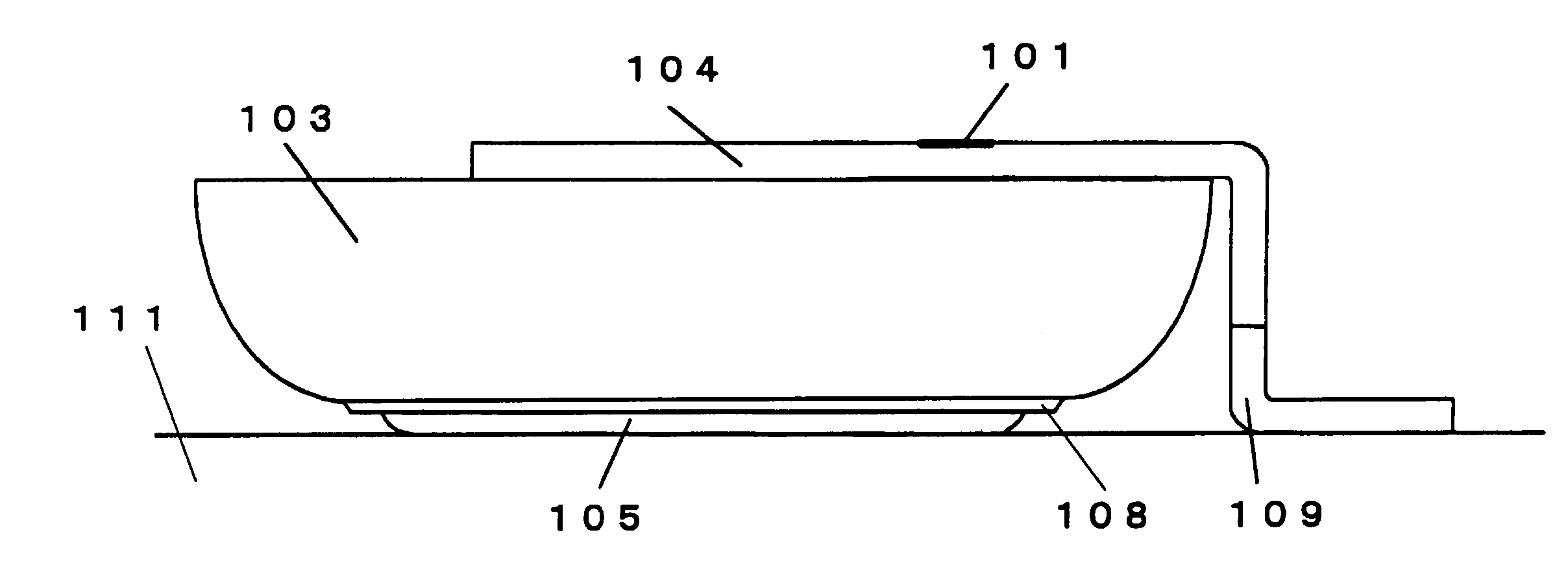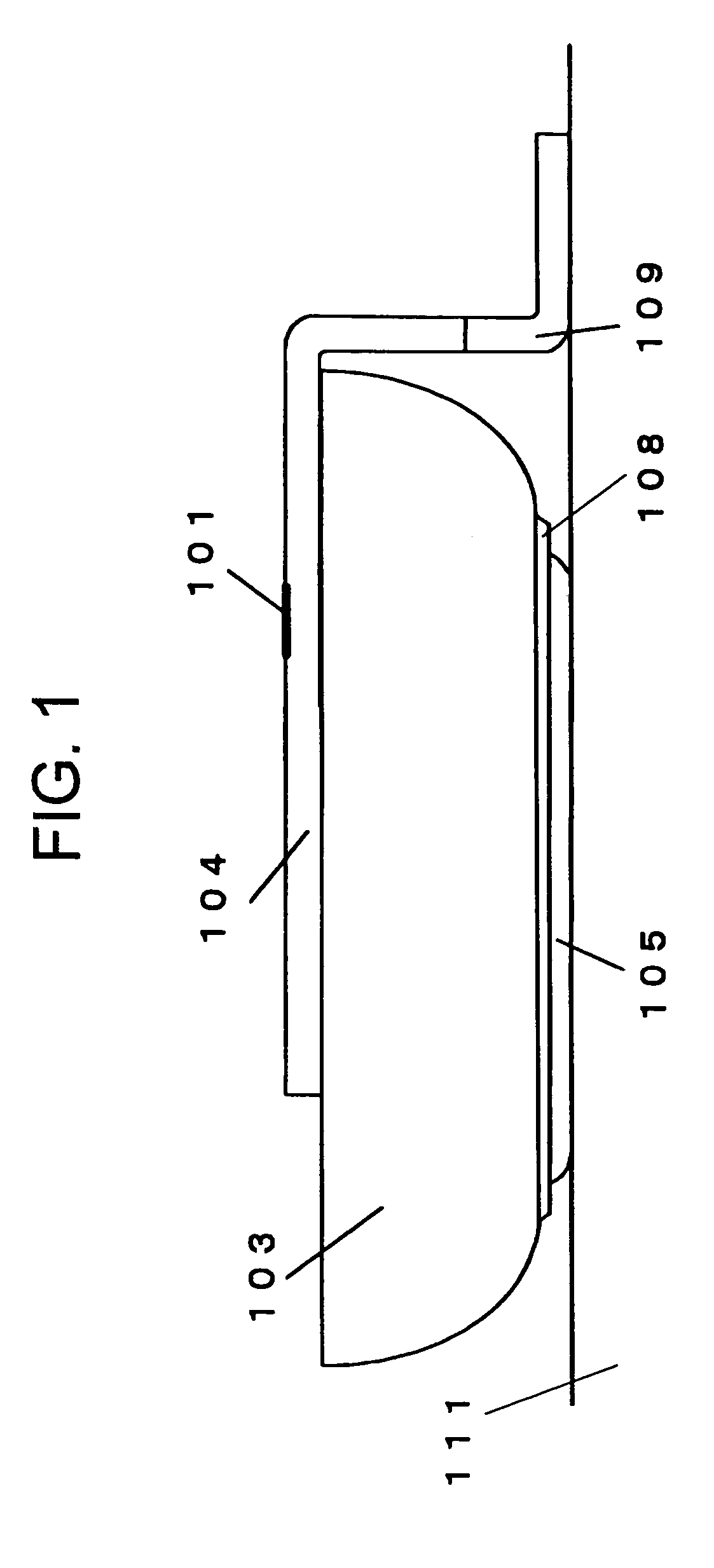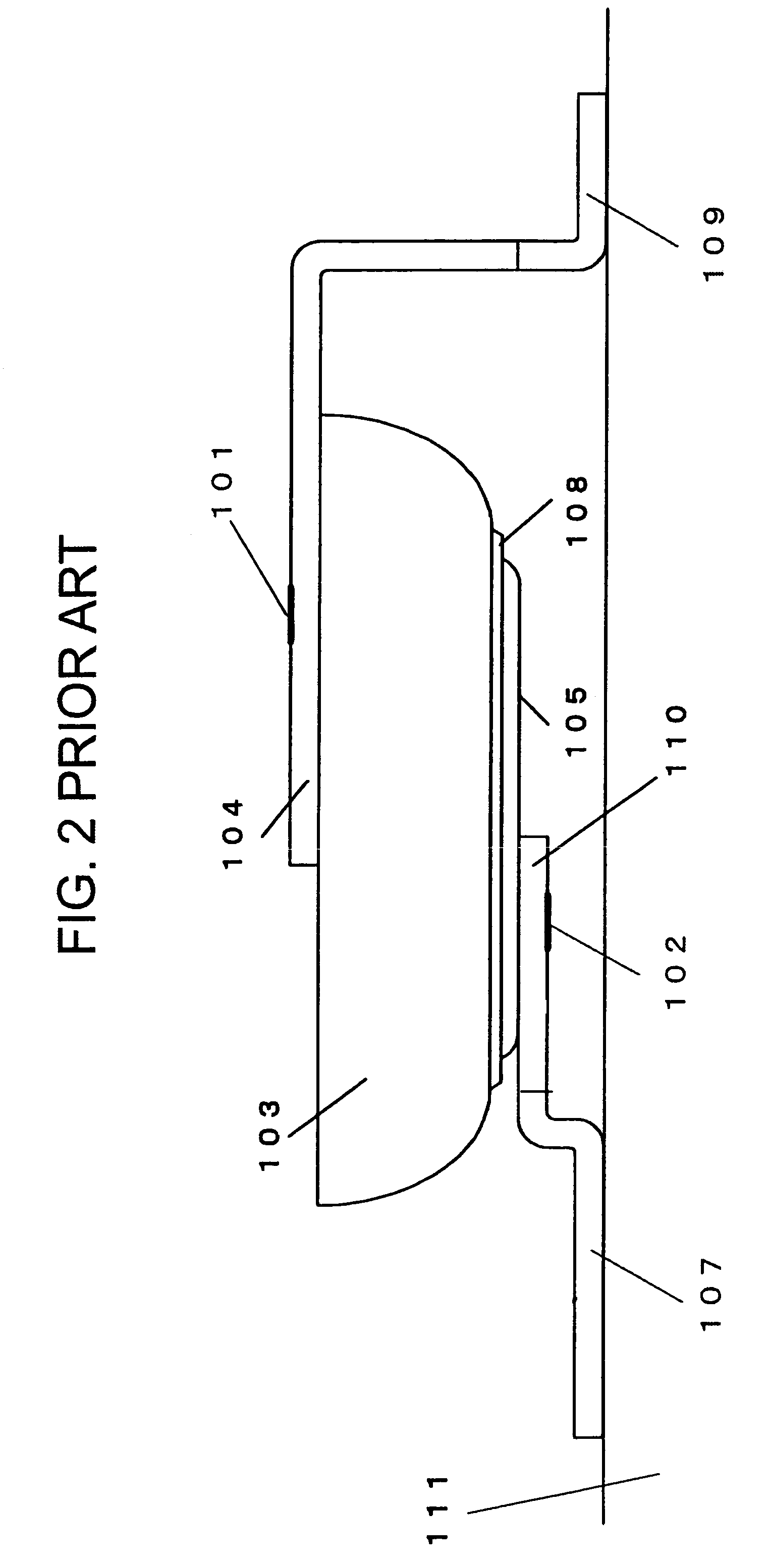Electrochemical cell
- Summary
- Abstract
- Description
- Claims
- Application Information
AI Technical Summary
Benefits of technology
Problems solved by technology
Method used
Image
Examples
example 1
[0026]On a surface of a stainless steel plate (SUS 304) of a thickness of 0.15 mm, a Cu plating was applied with a thickness of 2 μm, and a solder plating of a Sn-alloy was applied thereon with a thickness of 5 μm. This stainless steel plate was made into the can for the negative pole, with the plated surface positioned at the outside of an electrochemical cell. The negative pole can thus formed was employed in preparing an electric double layer capacitor of 414 size. A gasket was constituted of PPS. On this electric double layer capacitor, a positive pole terminal of a width of 2 mm was laser welded. On the end portion of the positive pole terminal, a Cu plating was applied with a thickness of 2 μm, and a solder plated layer of a Sn-alloy solder was applied thereon with a thickness of 5 μm.
[0027]A cream solder was applied on a surface of a circuit board, coming into contact with the electric double layer capacitor of this example. The electric double layer capacitor was placed on t...
example 2
[0029]On a surface of a stainless steel plate (SUS 316) of a thickness of 0.10 mm, a Ni plating was applied with a thickness of 1 μm, and a Sn solder plating was applied thereon with a thickness of 5 μm. The stainless steel plate was made into the can for the positive pole, with the plated surface positioned at the outside of the electrochemical cell. The positive pole can thus formed was employed in preparing an organic electrolyte secondary battery of 414 size. A gasket was constituted of PEEK. On this organic electrolyte secondary battery, a negative pole terminal of a width of 2 mm was laser welded. On the end portion of the negative pole terminal, a Ni plating was applied with a thickness of 1 μm, and a Sn solder plated layer applied thereon with a thickness of 3 μm.
[0030]The height of the step 106 of the terminal was made larger by 0.1 mm than the height of the organic electrolyte secondary battery. Since the organic electrolyte secondary battery was prepared with a tolerance ...
PUM
| Property | Measurement | Unit |
|---|---|---|
| Height | aaaaa | aaaaa |
Abstract
Description
Claims
Application Information
 Login to View More
Login to View More - R&D
- Intellectual Property
- Life Sciences
- Materials
- Tech Scout
- Unparalleled Data Quality
- Higher Quality Content
- 60% Fewer Hallucinations
Browse by: Latest US Patents, China's latest patents, Technical Efficacy Thesaurus, Application Domain, Technology Topic, Popular Technical Reports.
© 2025 PatSnap. All rights reserved.Legal|Privacy policy|Modern Slavery Act Transparency Statement|Sitemap|About US| Contact US: help@patsnap.com



